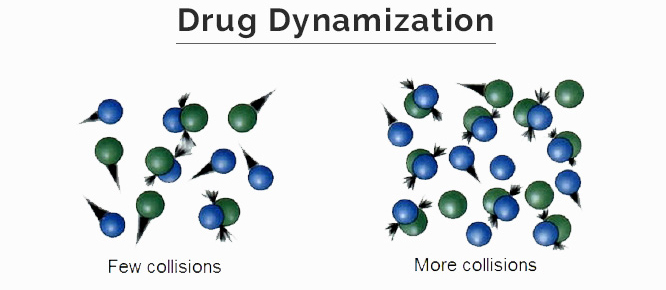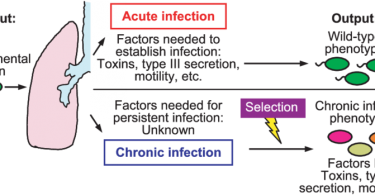
Abstract: The physico-dynamic theory implies that, a homoeopathic medicine acts on the dynamic or energy level, not in the molecular level. This theory is based on the ‘Theory of Drug-dynamization’ of our Master Hahnemann. This theory also explains the process of formation of energy, the nature or form of the energy, the distribution of energy, absorption or emission of energy (energy transaction) in Ethyl alcohol or lactose sugar and ultimately how the produced energy in lactose and ethyl alcohol is utilized in the living body Electro physiologically to cure the disease and how it acts on the vital force (vital energy) of living body scientifically are discussed by means of some relevant formulas of the chapter statistical, Quantum mechanics, Thermodynamics, Electro-magnetic Radiation Theory, Theory of Resonance, etc. In a word, it proves that art of Homeopathy is actually Science of high specificity.
Introduction: Master Hahnemann (Christian Friedrich Samuel Hahnemann, born at Meissen, near Dresden(Germany) on 10.04.1755) already stated that a homeopathic medicine acts in the dynamic or energy plane of the living organisms which is widely described by him in his well famous creation the ORGANON OF MEDICINE but how this medicinal energy is formed, distributed, stored in vehicle molecules and how this energy is absorbed by the living body and acts on the vital force and energy expression cannot be described by him. This theory ‘The physico-dynamic Theory’ explains it widely in a mathematical way.
But why did Master Hahnemann think in this regard?
He stated that a disease has a dynamic motion, i.e., a patient suffers from different diseases gradually one after another, i.e. the disease of Headache, Angina pectoris (Heart disease), Degeneration of liver, kidney etc. Again sometime a patient has to suffer an alternative disease; i.e. Congestion of Brain and Heart alternatives. When an Allopathic medicine is administered, then one symptom disappears, but another symptom appears. So in allopathy a patient cannot be cured completely, it only palliates. Then he realized the dynamic effect of a disease. He also thought that when a medicine prepared in dynamic way, the dynamic energy will be produced and it will be absorbed in the medicated vehicle molecules which after administration on the patient, will work on the dynamic plane and if the dynamic energy of the medicine becomes greater than that of the dynamic force of the disease, then the disease will be annihilated from the living body to cure the disease. In this way, permanent cure will be possible. The ‘Physico-dynamic Theory’ gives the scientific phenomena of the whole process (Drug-dynamization, energy transaction, utilization of medicine into living body to cure the disease).
A living body is organized by a system of force which is different for different bodies. For a normal healthy body, this automatic guiding force which can be defined as the ‘vital force’, acts in such a manner that the system remains in a steady state. Now, if this state is disturbed by the dynamic influences of any noxious or morbific agent, the physiological changes that occur in the living body are modified and this is outwardly manifested as signs and symptoms through the material body. These physiological changes are deviated from the proper functioning of the body and deviates from the normal state and these are called the disease. Thus, disease is an effect caused by the derangement of the vital force in the living body. This total energy due to these forces is produced from the different types of biochemical reactions in the living body where intake of different types of food (proteins, fats, carbohydrates, minerals, vitamins etc.) plays principle roles. The produced energy is the guiding factor which controls the functioning of a living body. This energy is dependent on the normal intake of the diet. If a person cannot take the required food, he may suffer from different diseases. Misbalance of total energy leads to dysfunctions of some organs and as a result, there occurs some pathological changes in different systems of the body.
When a homoeopathic medicine is administered to a patient to compensate the loss in energy (vital force) in the living body (i.e., to correct the deranged vital force), the already changed pathological conditions due to lack of vital force again gets modified. At first, the medicine changes the molecular degenerative structures, which are formed due to Pathological causes and slowly regenerations will occur by means of the process of repairing mechanism. But, we will have to know how a homoeopathic medicine acts in the living body.
lt is known to a practicing physician that the activity of a homoeopathic medicine increases with dilution. Molecules of drug do not exist in this dilution. Moreover, this principle is not at all consistent with the Law of Mass Action in chemistry which states that higher the concentration, higher is the activity. Thus, it is evident that action of a homoeopathic medicine cannot be explained in terms of molecular participation. Alternative explanation in terms of energy can be elucidated as follows.
Scientific Explanation of the Theory:
Process of Drug Dynamization: 1 part of the mother drug is mixed with 99 parts of ethyl alcohol or Lactose sugar and ten equal strokes or pulverization is performed by means of a computer to prepare a potency of the medicine. In this time, there occurs molecular collisions among the drug molecules and vehicle molecules and these collisions are random in nature. Here the molecular collisions are occurred haphazardly, so the system has no possibility of the formation of viscos force in this context. This is done at room temperature and pressure and in a closed vessel of a particular volume. So, during drug-dynamization due to dynamic energy of each molecule, an energy change or energy transaction will be occurred in the solution (medicine). There are great probabilities of formation of different types of energy. Such as molecular vibrational energy, translational energy, rotational energy, Electro-magnetic energy, resonating energy etc., and the whole energy transaction will occur via solvent molecules interaction where H- bond net- work structure and a part of the produced energy will be absorbed in the form of potential or internal energy. So, the affixed energy of fixed frequency of a particular drug exhibits in the medicine and this leads to the creation of individual character of the medicine.
At first, we will have to know how the energy is formed and the nature or form and distribution of the energy during drug dynamization. Now, we know that during drug dynamization ten equal strokes are required to produce energy due to collisions. lf the number of strokes are increased excessively, the energy will be very high which cannot be absorbed by ethyl alcohol in its molecular bond and H-bonded network structure. i.e., the stability of C2H5OH may be lost. So, in order to prepare a fixed potency, fixed number of strokes will have to be performed. Now, from the statistical point of view, we can consider that there are five probabilities of collisions among the molecules in the container:
- Drug vs drug molecules.
- Drug vs vehicle molecules.
- Vehicle vs vehicle molecules.
- Drug vs wall of the container.
- Vehicle vs wall of the container.
So, the probability of forming electronic energy is Zero. Sometimes, Vibrational and rotational energy may be formed. But the probability of forming translational energy is very high which is so minute in nature that it cannot be measured experimentally by means of a spectroscope.
From the Statistical mechanics, we can consider that during drug dynamization, the dynamic energy of each molecule is increased and it thereby attains high kinetic energy. Now, from the Boltzmann Distribution Law, we can assume that every molecule is not in same energy levels. The molecules which have higher energy level losses their energy and it is transferred to the other molecules when they collide with each other. Now, on absorption of this energy the collided molecule goes to the excited state and thereby vibrational energy changes may be occurred. lf the energy absorption becomes less, then only rotational changes may be occurred. lf the energy absorption becomes minute; then only translational changes can be occurred. Since, the energy order in the case of vibrational changes of the molecules is greater than that of rotational changes, so rotational changes must occur with vibrational changes. So, we can say that every collision among the drug and vehicle molecules is not effective in vibrational and rotational changes. Now, from Maxwell’s Velocity Distribution Law, we have

This states that during drug dynamization the molecules of the drug and vehicle which collide the other molecules with high velocities help for the vibrational and rotational changes. lt also helps to find out the probability of rotational, vibrational and translational changes of the drug and vehicle molecules.
Not only this theory is applicable for an ideal gas but also a liquid at a particular temperature, pressure and volume although in the case of a liquid different types of interactions such as dipolar interactions of drug and solvent molecules London Dispersion force, Sterric Hindrance are mostly involved. When the system is in steady state, then the above interactions are involved. At the very beginning of the dilution the drug molecules are enriched. So, the interaction among the drug/drug, drug/alcohol, and alcohol/alcohol may be occurred.
But, with the increment of the dilution, the drug molecules go for apart from each other. So, interactions among the solvent molecules may occur and Steric effect becomes negligible.
APPLICATION OF THE DIFFERENT MATHEMATICAL FORMULAS OF QUANTUM MECHANICS TO EXPLAIN THIS THEORY:





